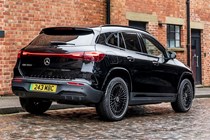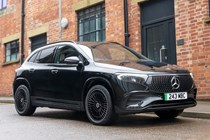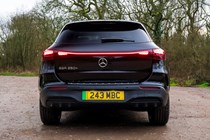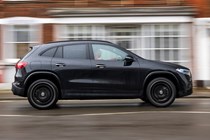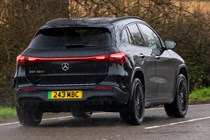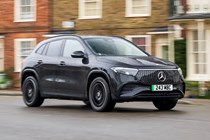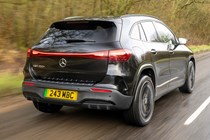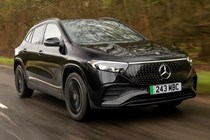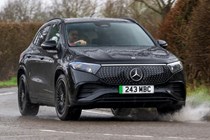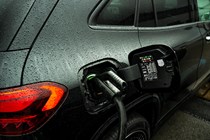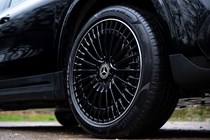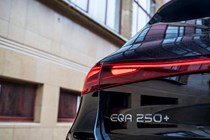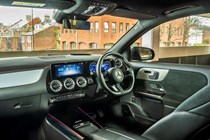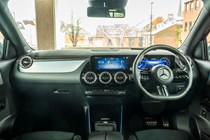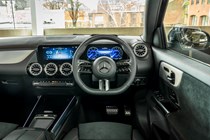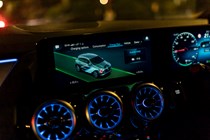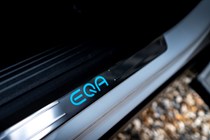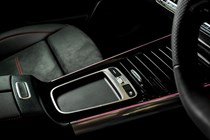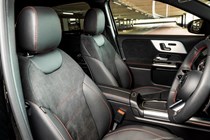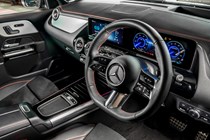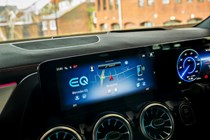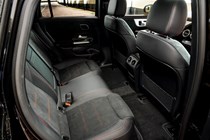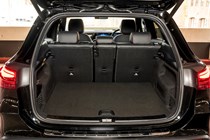
Mercedes-Benz EQA running costs and reliability
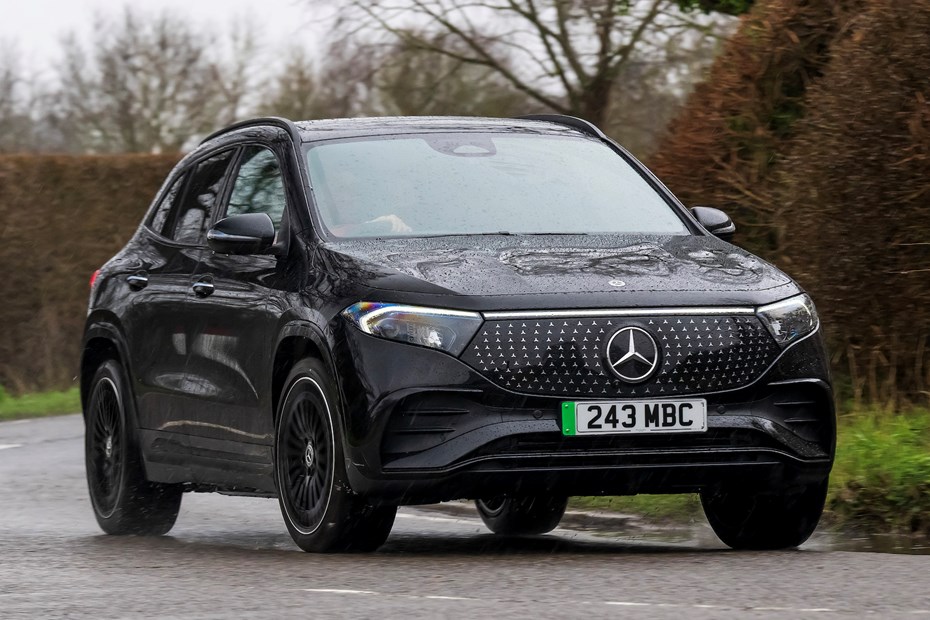
Miles per pound (mpp) ⓘ
| Electric motors, home charging | 9.7 - 12.6 mpp |
|---|---|
| Electric motors, public charging | 5.2 - 6.8 mpp |
Fuel economy ⓘ
| Electric motors | 3.3 - 4.3 miles/kWh |
|---|
- Very low electric consumption
- Good useable range
- Charging speed isn’t the quickest
What are the running costs?
Claimed battery range and performance are good, and have been improved with the 2024 updates. A substantial lithium-ion battery pack is fixed into the floor, so the EQA 250 has a usable battery capacity of 70.5kWh. That lags behind the 78kWh you get in a Volvo XC40 Recharge, but is on the money for an EV of this size.
It’s calibrated for range and efficiency rather than performance. The entry-level front-wheel drive EQA 250 model claims up to 345 miles of range, according to WLTP figures. In real-world terms you should be able to squeeze 4.0 miles per kWh out of the EQA. Interestingly, the more powerful four-wheel-drive EQA 300 4Matic and EQA 350 4Matic models still manage a claimed 258-263 miles on a full charge.
The EQA has an Eco Assist system, which uses navigation and traffic sign data to gauge how much brake regeneration is required at a given moment, and the navigation also takes into account charging times to give you as accurate a time as possible to get to your destination.

From a home chargepoint, using a 7.4kW wallbox, you can top up the EQA’s battery in around 11 hours, or just over five hours if you can connect to 11kW charging. Charging from 10-80% battery from a rapid DC public charger can take as little as 30 minutes, assuming you can find a charger that will supply the EQA’s maximum 100kW charging speed.
Servicing and warranty
The EQA comes with a standard three-year warranty against the usual defects, and a specific eight-year, 100,000-mile warranty for the battery.
There’s also an impressive 30-year warranty against corrosion. When you pick your new EQA up from the dealer, it’s covered by a seven-day comprehensive insurance policy, giving you time to sort out your own cover.
Mercedes-Benz also offers an inclusive service package for the EQA that covers all your regular servicing.
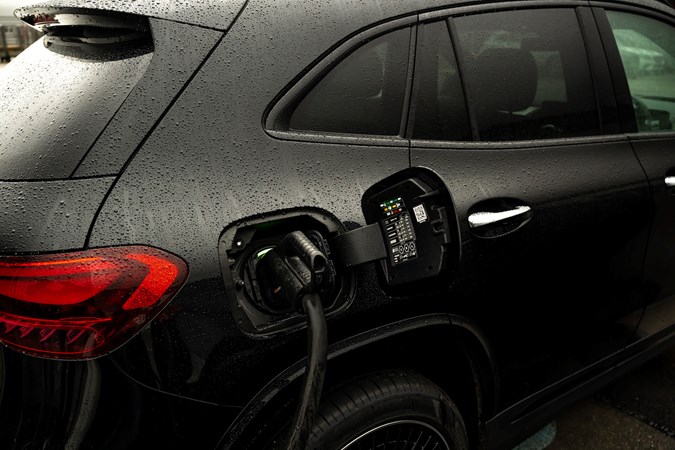
Reliability
- Electric tech tends to be reliable
- EQA recalled for lacking owner’s manual
- Mercedes dealers often don’t rate well
The EQA should prove reliable, not least because it’s electric — fewer moving parts means better reliability, at least in the mechanical sense. That said, the MBUX system has come in for criticism in the recent past for its reliability, and the all-electric EQC (bigger brother to the EQA) got hit with a recall for a power steering failure.
The EQA itself has had one recall — but only to ensure that vehicles were fitted with a printed owner’s manual.
The Mercedes-Benz dealer network has also often come in for criticism for its customer service record, but efforts are being made to improve in that area.
Ongoing running costs
| Road tax | £620 |
|---|---|
| Insurance group | 37 - 45 |
Get an insurance quote with

|
|



